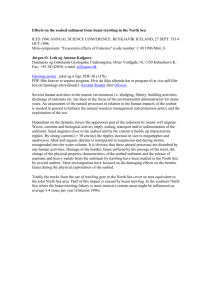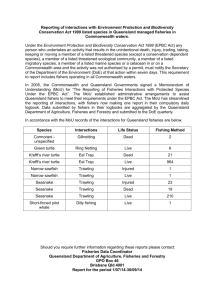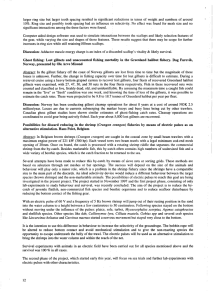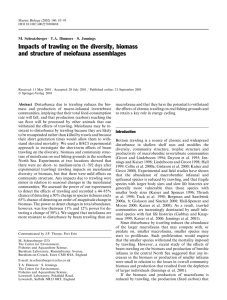Bottom trawling keeps the geochemistry of the seafloor
advertisement
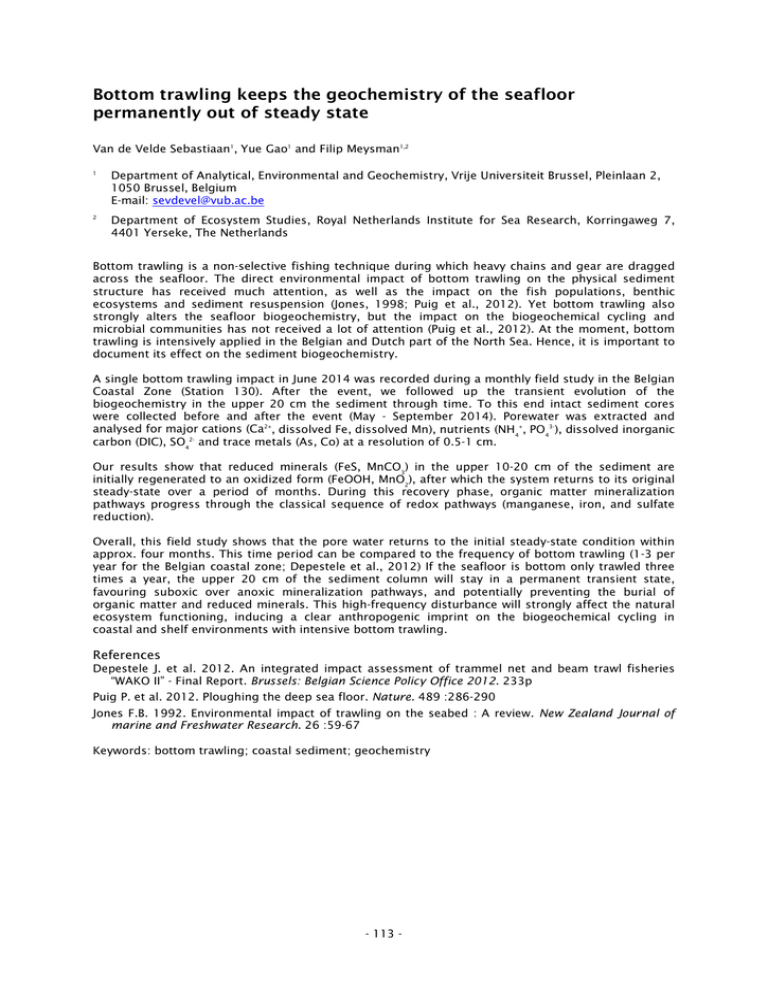
Bottom trawling keeps the geochemistry of the seafloor permanently out of steady state Van de Velde Sebastiaan1, Yue Gao1 and Filip Meysman1,2 1 Department of Analytical, Environmental and Geochemistry, Vrije Universiteit Brussel, Pleinlaan 2, 1050 Brussel, Belgium E-mail: sevdevel@vub.ac.be 2 Department of Ecosystem Studies, Royal Netherlands Institute for Sea Research, Korringaweg 7, 4401 Yerseke, The Netherlands Bottom trawling is a non-selective fishing technique during which heavy chains and gear are dragged across the seafloor. The direct environmental impact of bottom trawling on the physical sediment structure has received much attention, as well as the impact on the fish populations, benthic ecosystems and sediment resuspension (Jones, 1998; Puig et al., 2012). Yet bottom trawling also strongly alters the seafloor biogeochemistry, but the impact on the biogeochemical cycling and microbial communities has not received a lot of attention (Puig et al., 2012). At the moment, bottom trawling is intensively applied in the Belgian and Dutch part of the North Sea. Hence, it is important to document its effect on the sediment biogeochemistry. A single bottom trawling impact in June 2014 was recorded during a monthly field study in the Belgian Coastal Zone (Station 130). After the event, we followed up the transient evolution of the biogeochemistry in the upper 20 cm the sediment through time. To this end intact sediment cores were collected before and after the event (May - September 2014). Porewater was extracted and analysed for major cations (Ca2+, dissolved Fe, dissolved Mn), nutrients (NH4+, PO43-), dissolved inorganic carbon (DIC), SO42- and trace metals (As, Co) at a resolution of 0.5-1 cm. Our results show that reduced minerals (FeS, MnCO3) in the upper 10-20 cm of the sediment are initially regenerated to an oxidized form (FeOOH, MnO2), after which the system returns to its original steady-state over a period of months. During this recovery phase, organic matter mineralization pathways progress through the classical sequence of redox pathways (manganese, iron, and sulfate reduction). Overall, this field study shows that the pore water returns to the initial steady-state condition within approx. four months. This time period can be compared to the frequency of bottom trawling (1-3 per year for the Belgian coastal zone; Depestele et al., 2012) If the seafloor is bottom only trawled three times a year, the upper 20 cm of the sediment column will stay in a permanent transient state, favouring suboxic over anoxic mineralization pathways, and potentially preventing the burial of organic matter and reduced minerals. This high-frequency disturbance will strongly affect the natural ecosystem functioning, inducing a clear anthropogenic imprint on the biogeochemical cycling in coastal and shelf environments with intensive bottom trawling. References Depestele J. et al. 2012. An integrated impact assessment of trammel net and beam trawl fisheries “WAKO II” - Final Report. Brussels: Belgian Science Policy Office 2012. 233p Puig P. et al. 2012. Ploughing the deep sea floor. Nature. 489 :286-290 Jones F.B. 1992. Environmental impact of trawling on the seabed : A review. New Zealand Journal of marine and Freshwater Research. 26 :59-67 Keywords: bottom trawling; coastal sediment; geochemistry - 113 -
